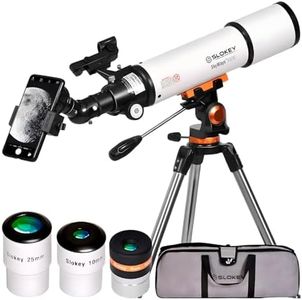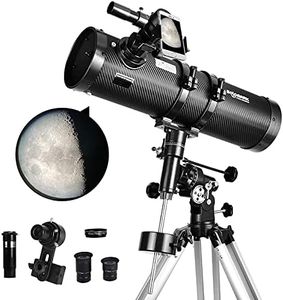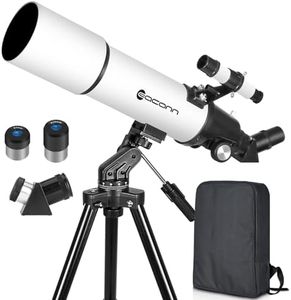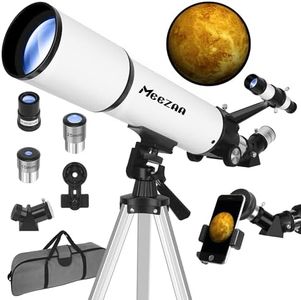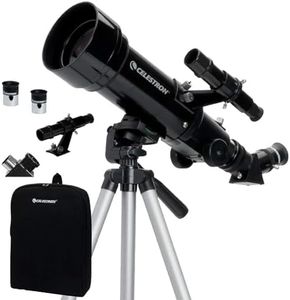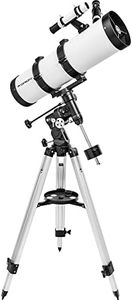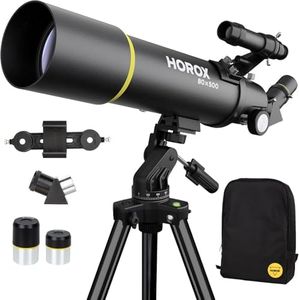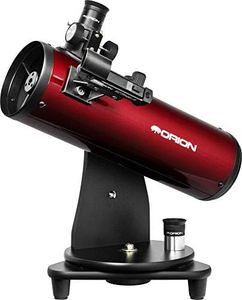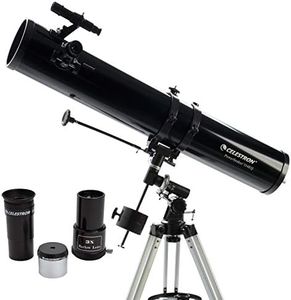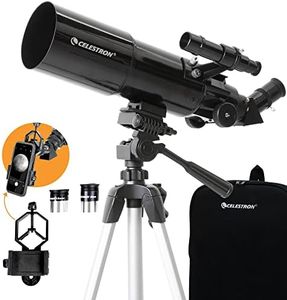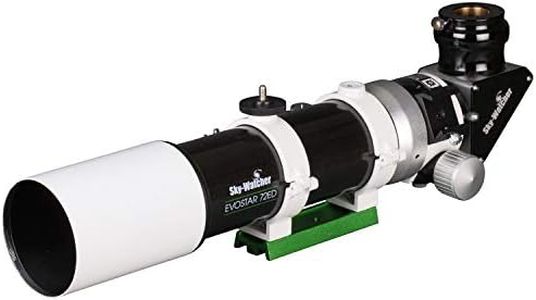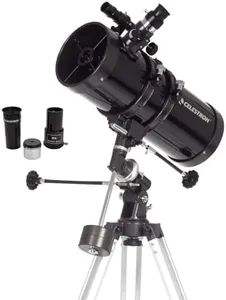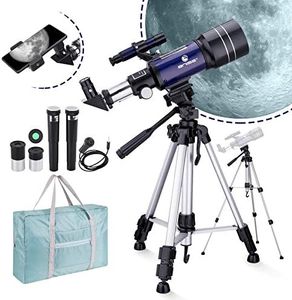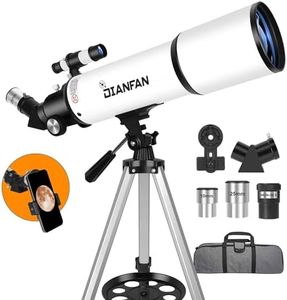10 Best Telescope For Beginners 2025 in Canada
Our technology thoroughly searches through the online shopping world, reviewing hundreds of sites. We then process and analyze this information, updating in real-time to bring you the latest top-rated products. This way, you always get the best and most current options available.

Our Top Picks
Winner
Telescope 130EQ Newtonian Reflector Telescopes for Adults, Professional Telescopes for Adults Astronomy, Comes with 1.5X Barlow Lens Smartphone Adapter & 13% T Moon Filter
The SOLOMARK 130EQ Newtonian Reflector is a solid choice for beginners interested in astronomy. Its large 130mm aperture lets in plenty of light, making it easier to see planets and deep space objects with good brightness and detail. The fully-coated glass optics and included 1.5X Barlow lens improve image clarity, helping you get a better view of the night sky.
The German Equatorial mount is a key feature here, allowing for precise manual tracking of celestial bodies, which is great for learning how to follow stars and planets as they move. This mount type can have a bit of a learning curve compared to simpler mounts. The tripod is stable and adjustable, which helps keep the images steady. On the downside, the telescope is quite large and weighs about 15 kg, so it’s less portable for taking on trips or easy storage. You’ll also need to manually focus, which is normal for this type of scope but might require some practice.
The package includes useful accessories like two eyepieces, a moon filter, and a smartphone adapter, adding value and making it easier to explore different views. Though not the lightest or simplest setup, this telescope provides a good balance of quality and features for adults new to astronomy who want a more serious beginner instrument.
Telescopes for Adults Astronomy, 80mm Aperture 600mm Refractor Telescope for Kids & Beginners, Compact and Portable Travel Telescopio with Backpack
The EACONN 80mm refractor telescope is a solid choice for beginner astronomers, especially kids and adults just starting out. Its 80mm aperture is quite good for capturing bright and clear images of the moon and planets, which is important since a larger aperture lets in more light for better viewing. The 600mm focal length provides a decent balance between magnification and field of view, making it versatile enough for various celestial objects without being too complicated. The altazimuth mount with rough adjustment and positioning gimbal is straightforward to use, allowing easy movement up/down and side to side, which is suitable for newcomers who may not want to deal with complex setups.
Portability is another plus: the telescope weighs only 840 grams, comes with an adjustable tripod, and includes a backpack for easy transport, making it great for travel or outdoor use. The package also comes with useful accessories like two eyepieces offering 30x to 66x magnification and a finder scope to help locate objects, plus a smartphone adapter for taking photos, which adds fun and learning value.
On the downside, manual focus and operation might require some patience at first, and while the optics are fully coated, it’s still a basic refractor that won’t deliver the detail or brightness of more advanced models. Also, the altazimuth mount, while simple, lacks the precision tracking of equatorial mounts, which means objects can drift out of view during longer observations. This telescope is well-suited for beginners looking for an easy-to-use, portable, and affordable way to explore astronomy, though those wanting deeper space views or more advanced features might eventually want to upgrade.
MEEZAA Telescope for Adults Astronomy, 80mm Aperture 600mm Refractor Telescope for Kids & Beginners, Fully Multi-Coated Optics High Transmission Telescopes with Tripod & Phone Adapter & Carrying Bag
The MEEZAA Telescope is designed with beginners and young astronomy enthusiasts in mind. Its 80mm aperture captures enough light to see planets and the moon clearly without being overwhelming, while the 600mm focal length balances magnification and field of view, making it easier to find objects in the sky. The included eyepieces and 3x Barlow lens allow magnifications from 24x up to 180x, providing versatility for various viewing needs.
The Altazimuth mount is simple and intuitive, allowing smooth horizontal and vertical movement, ideal for beginners learning to navigate the night sky. Portability is fair; weighing about 3 kg, it comes with a tripod and carrying bag, making it manageable though not ultra-lightweight for travel. Setup is straightforward with clear instructions, and the manual focus typical for this type of telescope may require some patience to achieve sharp images. A phone adapter is included, enabling users to capture photos or videos through the eyepiece, which enhances the experience by allowing easy sharing of discoveries.
The fully multi-coated optics improve image brightness and clarity, enhancing viewing quality. This telescope offers a well-rounded combination of quality optics, ease of use, and helpful accessories suited for beginners. However, those seeking something extremely portable or with computerized tracking may want to consider other options.
Buying Guide for the Best Telescope For Beginners
Choosing your first telescope can be exciting but also a bit overwhelming with all the options out there. The key is to focus on what you want to observe—like the Moon, planets, or deep-sky objects—and to pick a telescope that matches your interests and lifestyle. Think about where you'll use it (backyard, balcony, or traveling to dark sites), how much space you have for storage, and how comfortable you are with setting up equipment. Remember, the best telescope is the one you'll use often and enjoy learning with.Most Popular Categories Right Now
